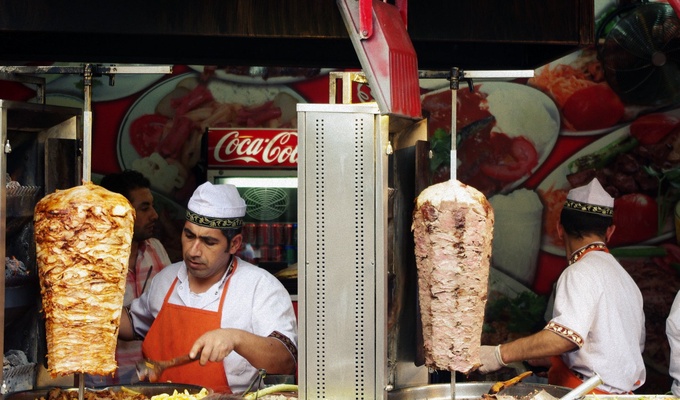Doner kebab, also spelled döner kebab, is a type of kebab, made of meat cooked on a vertical rotisserie. Seasoned meat stacked in the shape of an inverted cone is turned slowly on the rotisserie, next to a vertical cooking element. The operator uses a knife to slice thin shavings from the outer layer of the meat as it cooks. The vertical rotisserie was invented in the 19th-century Ottoman Empire, and dishes such as the Arab shawarma, Greek gyros, Canadian donair, and Mexican al pastor are derived from this.
The modern sandwich variant of döner kebab originated and was popularized in Berlin in the 1960s by Turkish immigrants. This was recognized by the Berlin-based Association of Turkish Doner Manufacturers in Europe, in 2011. Nowadays there are more döner kebab stores in Berlin than in Istanbul.
The sliced meat of a doner kebab may be served on a plate with various accompaniments, stuffed into a pita or other type of bread as a sandwich, or wrapped in a thin flatbread such as lavash or yufka, known as a dürüm (literally meaning roll or wrap in Turkish). Kadir Nurman in the early 1970s introduced the sandwich or wrap form, which has become popular around the world as a fast food dish sold by kebab shops, and is often called simply a "kebab". The sandwich generally contains salad or vegetables, which may include tomato, lettuce, cabbage, onion with sumac, fresh or pickled cucumber, or chili, and various types of sauces.
